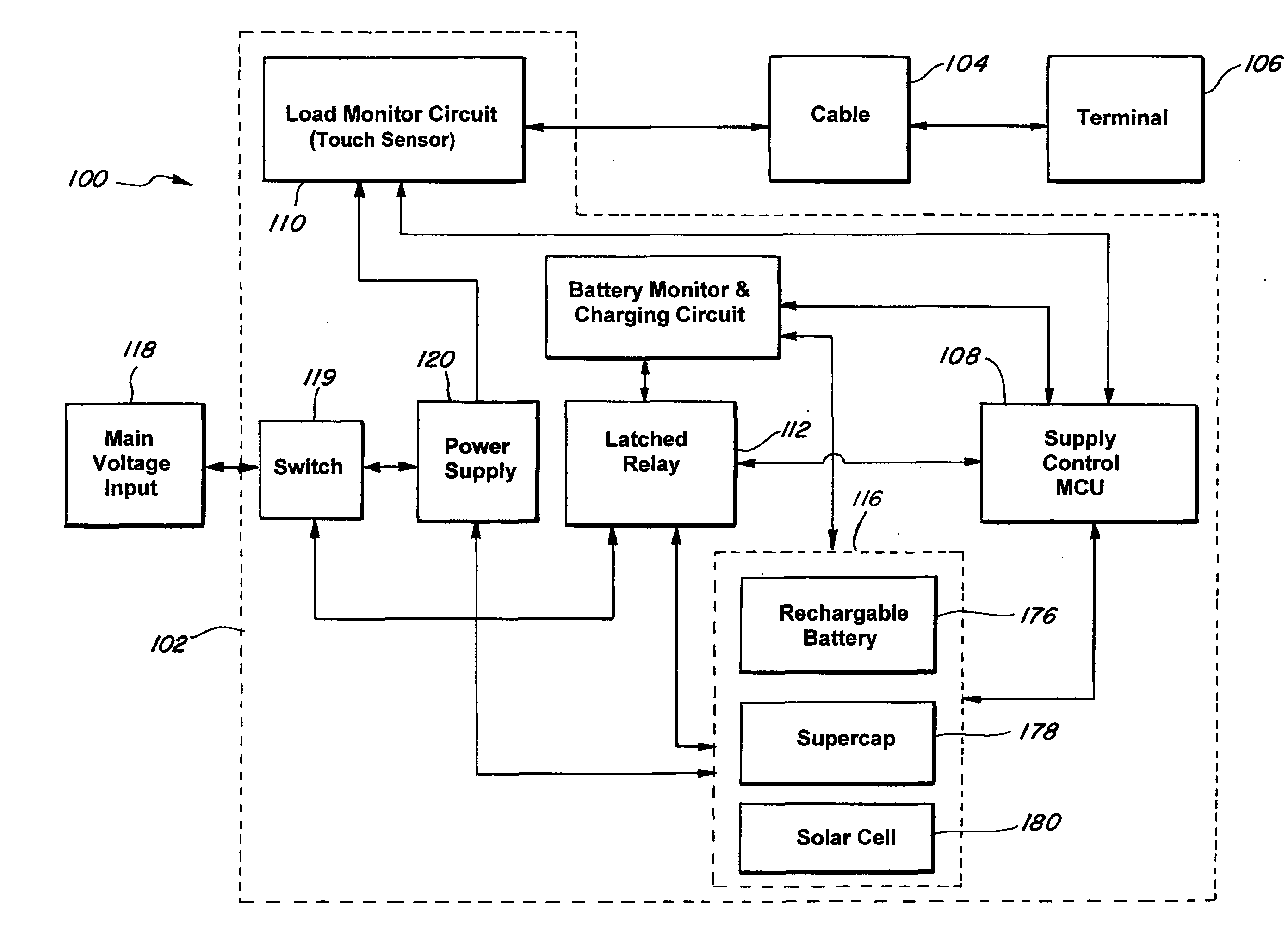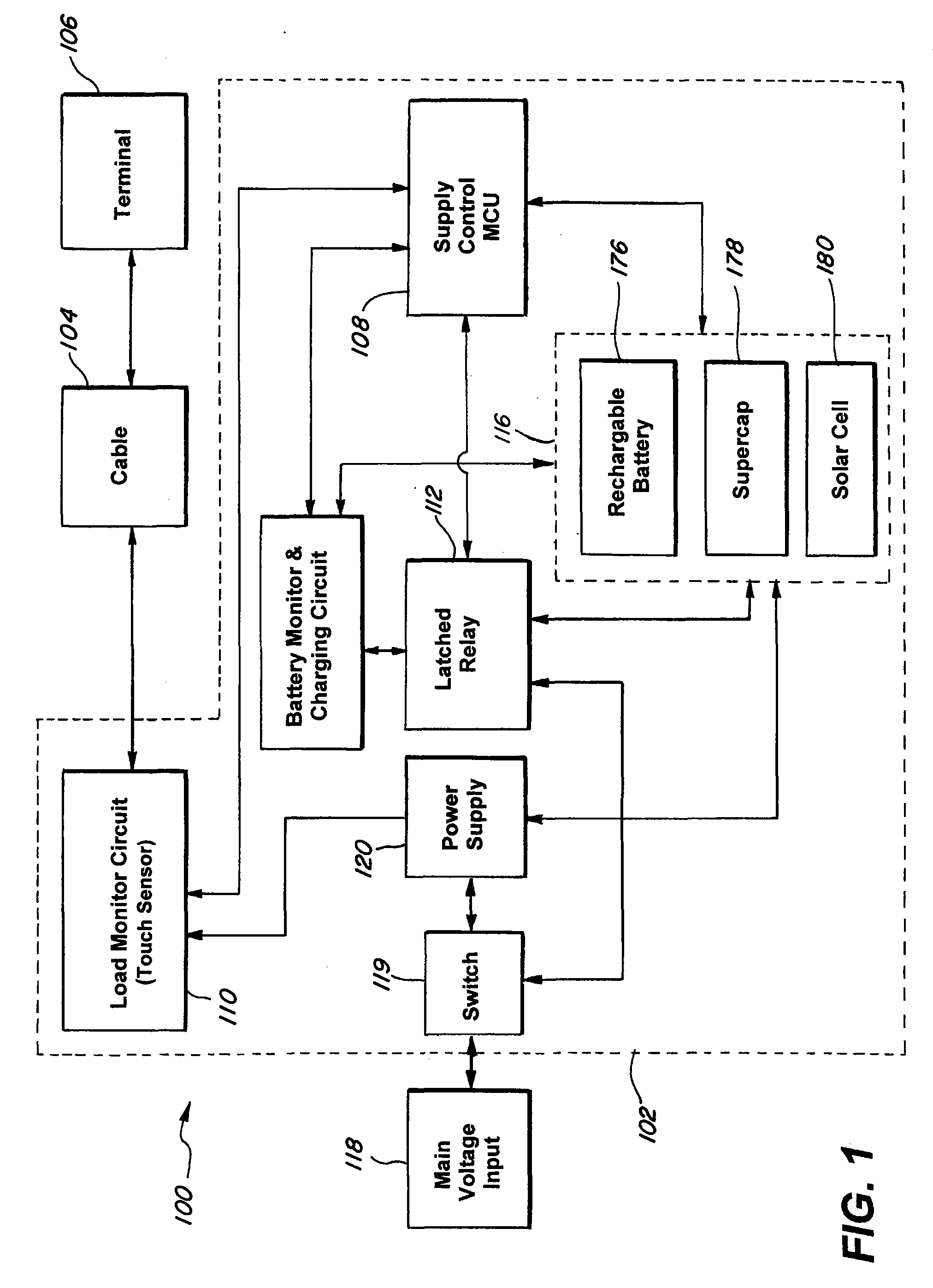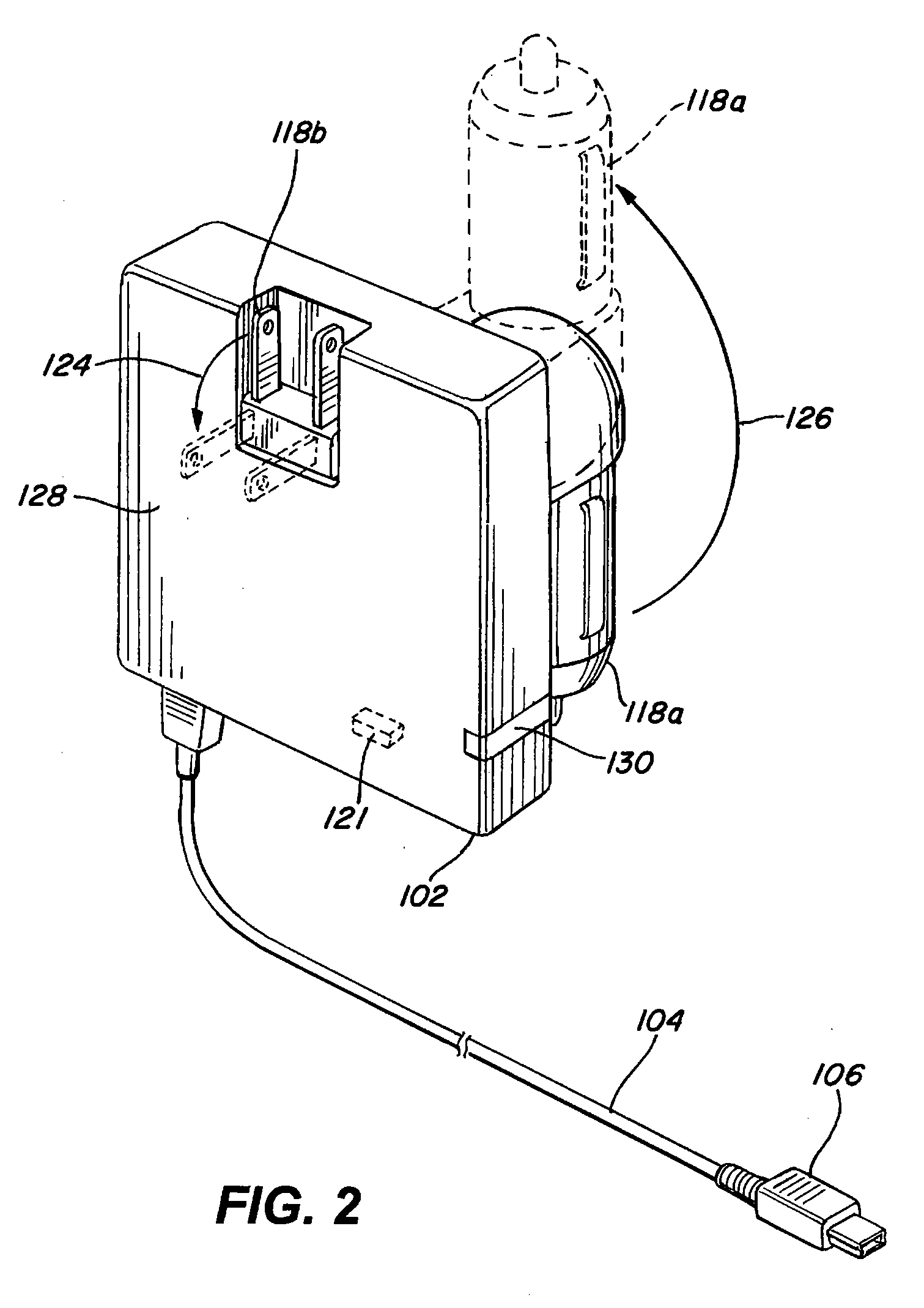Method and apparatus for recharging batteries in a more efficient manner
a battery charger and battery technology, applied in the field of more efficient battery chargers, can solve the problems of large amount of wasted energy, negative effect on the environment, and reduce the amount of power drawn by the battery charger, and achieve the effect of reducing the amount of power drawn
- Summary
- Abstract
- Description
- Claims
- Application Information
AI Technical Summary
Benefits of technology
Problems solved by technology
Method used
Image
Examples
Embodiment Construction
[0022]Apparatus, systems and methods that implement the embodiments of the various features of the present invention will now be described with reference to the drawings. The drawings and the associated descriptions are provided to illustrate some embodiments of the present invention and not to limit the scope of the present invention. Throughout the drawings, reference numbers are re-used to indicate correspondence between referenced elements.
[0023]FIG. 1 is a block diagram of a battery charger 100, while FIG. 2 is a perspective view of the battery charger. The battery charger 100 includes, for example, a converter unit 102, a cable 104, a terminal 106, and / or a main voltage input 118.
[0024]The terminal 106 is connected to the cable 104 and can be an electronic device. The terminal 106 can be, for example, a music player, a cell phone, a laptop, a desktop computer, a personal digital assistant (PDA), a camera, or any other type of electronic device which includes a rechargeable bat...
PUM
 Login to View More
Login to View More Abstract
Description
Claims
Application Information
 Login to View More
Login to View More - R&D
- Intellectual Property
- Life Sciences
- Materials
- Tech Scout
- Unparalleled Data Quality
- Higher Quality Content
- 60% Fewer Hallucinations
Browse by: Latest US Patents, China's latest patents, Technical Efficacy Thesaurus, Application Domain, Technology Topic, Popular Technical Reports.
© 2025 PatSnap. All rights reserved.Legal|Privacy policy|Modern Slavery Act Transparency Statement|Sitemap|About US| Contact US: help@patsnap.com



